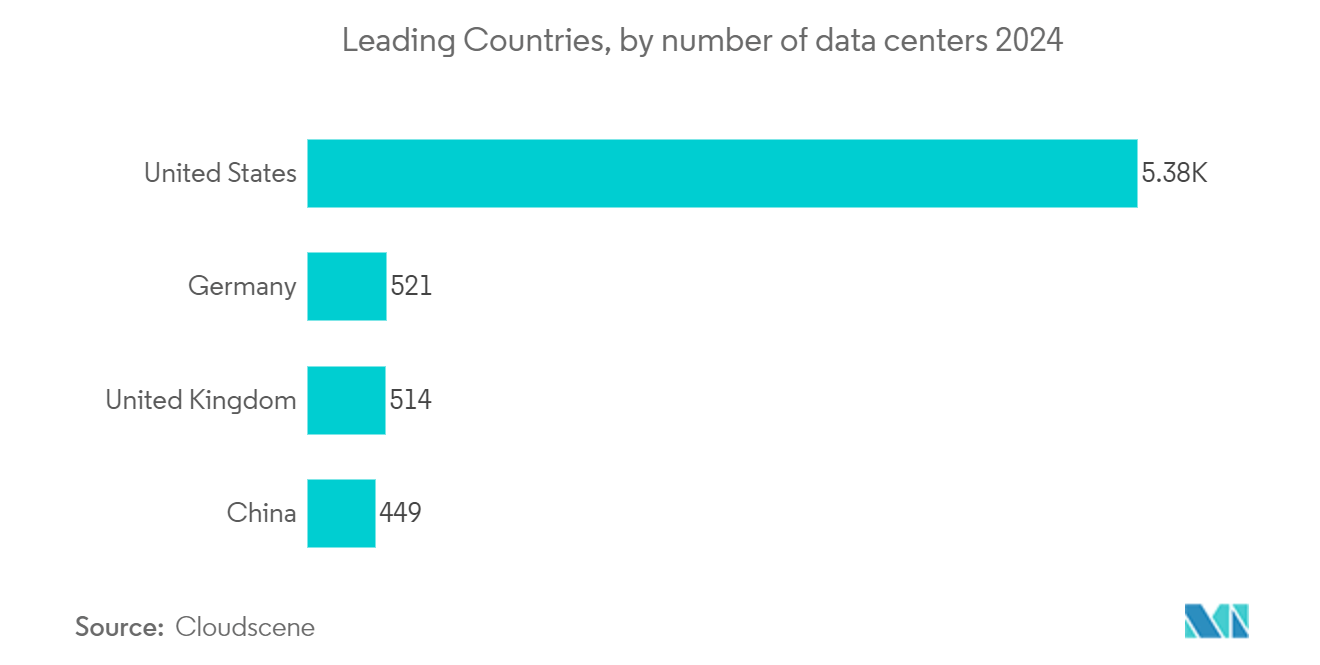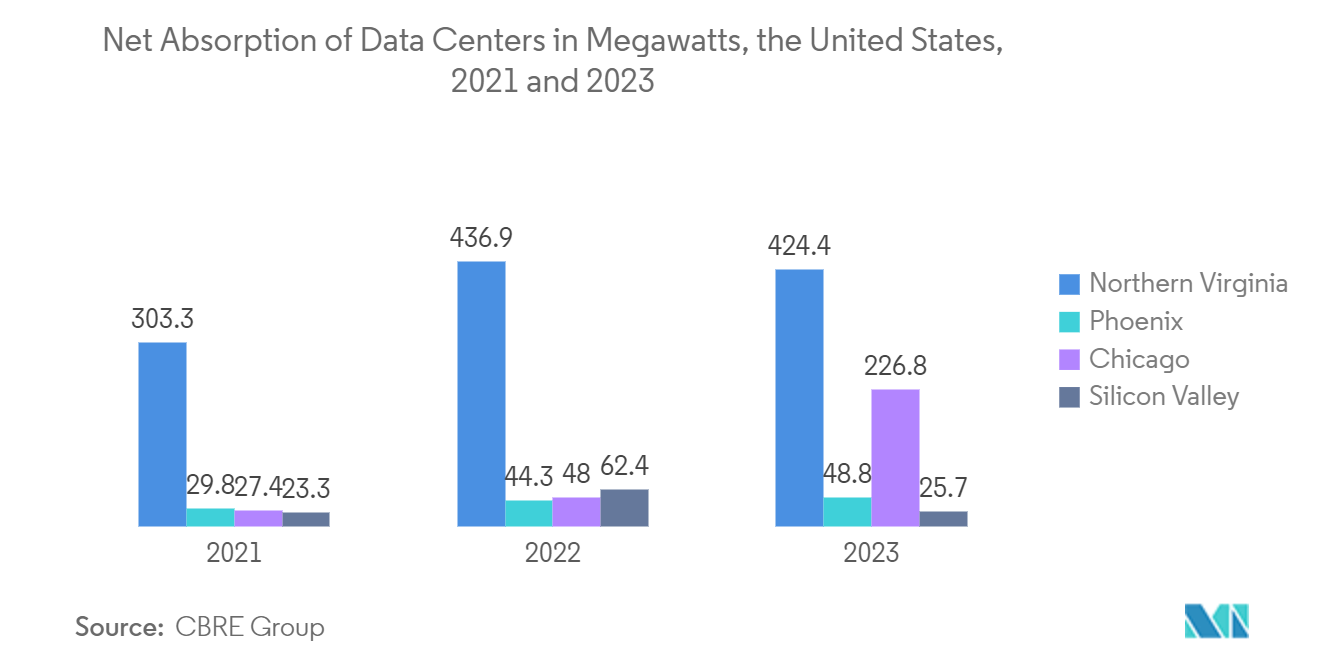Market Trends of New York Data Center Industry
Tier III Data Center Are Anticipated to Show Noticeable Growth During the Forecast Period.
- The effect of repairs on service is minimal in Tier-III data centers. Clients receive N+1 (the amount required for functioning plus a backup) availability from a level III provider. Unplanned maintenance, like any other technology product, can cause problems for a level III provider.
- Tier-III data centers, which have an uptime of about 99.982%, are preferred by bigger businesses. This implies that the data center won't be offline for longer than 1.6 hours in a year. A Tier-II data center's intricate infrastructure, high redundancy, and considerable power and cooling lines considerably increase uptimes. All parts are connected to various electricity sources via wires. If one fails, another can be used to ensure that performance is not impacted.
- Without shutting down the system, maintenance and repairs can be made if required. Additionally, several protections are set up to protect the complete data center during a power outage. Comparatively to Tier-I and Tier-II data centers, Tier-III data centers offer considerably higher levels of reliability.
- Due to their significantly improved dependability and security, Tier-III data centers are frequently chosen by law enforcement agencies, fire departments, healthcare facilities, and any company seeking a reputation for solid and dependable service. Additionally, it is commonly selected as a performance and cost compromise due to its superior performance compared to Tier-II data centers.
- Many data center operators like Equinix have set up Tier-III data centers across the United States; Equinix NY4 New York Data Center is situated at 755 Secaucus Road in Secaucus, New Jersey. A total of 338,967 cubic feet of data center space and 18.5 MW of mission-critical power are available at Equinix NY4. NY4 provides low-latency access to a sizable electronic trading environment as a carrier-neutral facility. The complex has N+1 power and N+2 cooling redundancy, making it a Tier III facility.
- The growing deployment of mega data centers is driving the industry. A business can take advantage of local advantages like cheap energy costs, a pleasant climate, or the availability of alternative energy sources by using fewer mega data centers, depending on where they are located. Virtualization significantly improves system utilization and enables companies to use fewer power-guzzling servers and storage devices.

The BFSI Industry in the City Has Observed A Noteworthy Digital Transformation
- The banking, financial services, and insurance (BFSI) industry in the city has undergone a significant digital transformation in recent years. The increased penetration of smartphones and high-speed Internet has encouraged people to opt for digital banking, which has also led to the integration of powerful cloud tools to store and analyze data. Such developments will generate significant demand in data centers for processing the data generated through the baking sector's digital transformation, boosting the Unites States market.
- The proliferation of digital payments, online banking, digital storage, and virtualization in the country's BFSI sector is expected to increase the demand for cost-effective and energy-efficient data center solutions. It ensures the reliable and continuous availability of IT and digital banking services in a highly secure manner. It can also secure and encrypt all device communications and control user access to guard against errors and malicious intents.
- Additionally, the rise of innovative payment solutions like buy now pay later (BNPL), along with the expansion of the fintech sector in the country, is expected to generate a substantial amount of data. Consequently, this surge in data generation is driving the demand for data centers, which play a crucial role in storing and analyzing this data.
- For instance, new payment convenience concepts like BNPL are fast catching up in the United States, with promising adoption from the population in the city. The gaining popularity of such fintech platforms contributes significantly to generating data, demanding data centers for the same.


